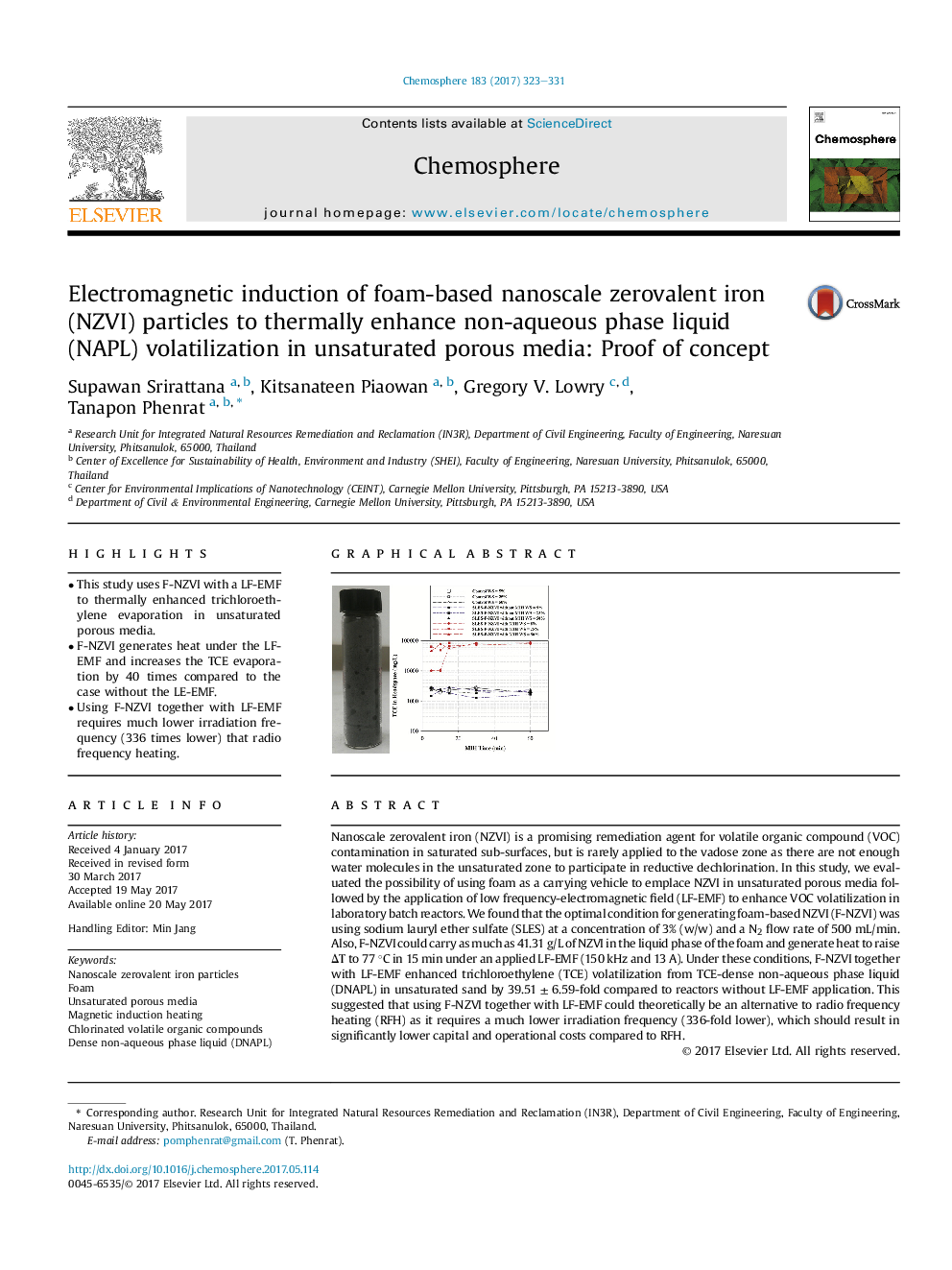| Article ID | Journal | Published Year | Pages | File Type |
|---|---|---|---|---|
| 5745990 | Chemosphere | 2017 | 9 Pages |
â¢This study uses F-NZVI with a LF-EMF to thermally enhanced trichloroethylene evaporation in unsaturated porous media.â¢F-NZVI generates heat under the LF-EMF and increases the TCE evaporation by 40 times compared to the case without the LE-EMF.â¢Using F-NZVI together with LF-EMF requires much lower irradiation frequency (336 times lower) that radio frequency heating.
Nanoscale zerovalent iron (NZVI) is a promising remediation agent for volatile organic compound (VOC) contamination in saturated sub-surfaces, but is rarely applied to the vadose zone as there are not enough water molecules in the unsaturated zone to participate in reductive dechlorination. In this study, we evaluated the possibility of using foam as a carrying vehicle to emplace NZVI in unsaturated porous media followed by the application of low frequency-electromagnetic field (LF-EMF) to enhance VOC volatilization in laboratory batch reactors. We found that the optimal condition for generating foam-based NZVI (F-NZVI) was using sodium lauryl ether sulfate (SLES) at a concentration of 3% (w/w) and a N2 flow rate of 500 mL/min. Also, F-NZVI could carry as much as 41.31 g/L of NZVI in the liquid phase of the foam and generate heat to raise ÎT to 77 °C in 15 min under an applied LF-EMF (150 kHz and 13 A). Under these conditions, F-NZVI together with LF-EMF enhanced trichloroethylene (TCE) volatilization from TCE-dense non-aqueous phase liquid (DNAPL) in unsaturated sand by 39.51 ± 6.59-fold compared to reactors without LF-EMF application. This suggested that using F-NZVI together with LF-EMF could theoretically be an alternative to radio frequency heating (RFH) as it requires a much lower irradiation frequency (336-fold lower), which should result in significantly lower capital and operational costs compared to RFH.
Graphical abstractDownload high-res image (232KB)Download full-size image
